The beauty industry is finally starting to meet the needs of older women, with a new breed of brands addressing their demands realistically and without sparing on glamour. Experts give their verdict on this lucrative and growing market segment.
What do we want?
Imogen Matthews, Founder of Imogen Matthews Associates, looks at the ways luxury beauty brands market to 50-plus women.
It is only recently that the beauty industry has started to wake up to the fact that women over 50 are a large, growing and extremely important demographic. Many women in this age group are in full time employment, lead busy and active lifestyles and invest a great deal in their personal appearance. The response by some of the bigger beauty companies has been to employ older models in advertising, but often this is as far as it goes. Still, the vast majority of sales assistants and consultants on the beauty counters are young women, who lack the understanding and peer-to-peer ability to connect with older customers.
Even if beauty companies have a strategy to market products at older consumers, there is little attempt to recognise that the needs of a 50-year-old woman are quite different to someone in her mid 60s or 70s. What young 50-year-old wants to be referred to in the same breath as her elderly mother?
In the Older Women: The Forgotten Demographic report in 2012, we examined this shortfall and the opportunities beauty companies had to target older women. We found that older women were enthusiastic users of all kinds of beauty products, but were strongly dissatisfied with advertising, product claims and the legibility of copy on packaging. Overwhelmed by product choice, they did not know where to go or who to ask for advice. In short, the beauty industry was failing to serve them.
Our latest report, Older Women in Beauty: The Golden Opportunity, examines what has happened since then. Apart from a few age-appropriate models being used by M.A.C, NARS and L’Oréal Paris, the vast majority of beauty advertising features women in their 20s and 30s, often promoting products designed for much older skins. The majority of skin care brands continue to use what is becoming outdated terminology such as anti-ageing, anti-wrinkle and skin correction, despite the fact that women over 50 find such claims unbelievable and unachievable.
It is niche brands that are best exploiting the opportunity to connect with older women with products that meet their specific needs. The case studies we provided in our latest report were for Studio 10 make-up, Stratum C skin care and White Hot hair care. Each of these brands have formulated age-appropriate products for older women but also have an active marketing and social media programme designed to connect with them, as well as to help and advise them on product usage.
Exclusive consumer research for Older Women in Beauty: The Golden Opportunity highlighted the issues older women have with current beauty products and what they would like to see more of. For example, many older women say they are not interested in moisturisers that claim to reduce, hide or get rid of wrinkles, but would prefer ones that treat persistently dry skin that can be a real issue post-menopause.
Finding the right make-up item can be challenging as women in their 50s often find that concealers can look ‘caked’ on fragile under-eye skin, mascaras don’t work properly on short sparse lashes and lipstick doesn’t stay on long enough to mask pale lips.
In hair care, this demographic wants products that deal with issues such as thinning, flyaway hair and grey hair that feels coarse. It’s about making hair look good, even if you choose not to cover
up grey.
Further new research into women’s premium beauty shopping habits for this year’s Premium Market Report 2015 confirms that women over 45 have a strong preference for buying cosmetics and fragrance from shops. They go shopping to ask for advice, but often end up disappointed because young sales assistants don’t understand their needs. There is a massive opportunity for premium beauty brands to communicate with mature women by providing them with a shopping experience they cannot hope to (or want to) obtain online.
Details on how to obtain Older Women in Beauty: The Golden Opportunity and The Premium Market Report 2015 are available from: www.thepremiummarketreport.com.
Imogen Matthews Associates helps marketers, retailers and consultants validate important strategic decisions via expert commentary and analysis on the beauty market.
www.imogenmatthews.co.uk
Addressing tresses
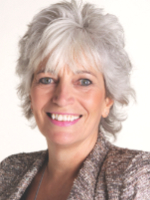
White Hot Founder Jayne Mayled discusses hair care which empowers women to embrace their new-look locks.
When you think about women who are in their 50s and beyond, it is no surprise they are still blazing their own trail today when we remember they are the Baby Boomers who have lived through the eclectic, non-conformist decades of the 60s and 70s.
It is perhaps thanks to this vibrant spirit that 2015 seems to be a tipping point in attitudes towards ageing and women; at last we’ve seen the beauty industry recognising that age and experience is a beautiful thing, with refreshing partnerships with successful and inspirational older women. For me, this is an absolutely logical step – we’re all getting older and just because we hit a certain milestone doesn’t mean we suddenly don’t want to look and feel good anymore.
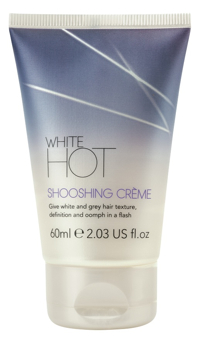
I’ve always loved beauty products and when, in my early 50s, I decided to embrace my naturally grey hair, I still absolutely wanted to use products that were efficacious as well as being positive, celebratory and gorgeous to use. There were products out there, but I just couldn’t find any that spoke to me in a positive, celebratory way, or that I wanted to proudly display on my bathroom shelf. So, after working in the beauty industry for more than 20 years, I decided to create my own, and White Hot is the result.
In the same way as our skin care routines adapt as we get older, so should our hair care. As hair loses its natural pigment, it can feel coarse and dry, as well as easily showing dirt and pollutants picked up through everyday life. So grey and white hair can need special care and attention to look its very best, which is ironic when you consider the stereotype that those of us with grey hair have ‘given up’ or ‘let go’. With these needs in mind, White Hot is a capsule collection of six shampoos, conditioners and styling products, all designed to brighten, cleanse, condition and define grey and white hair.
I firmly believe that ageing should not be all about clinging on to the vestiges of our youth; we should be able to celebrate what we’ve seen, done and learnt along the way without feeling pressure to conform to society’s expectations. I am not saying it’s an easy decision to stop dyeing your hair – in fact, it can be quite an emotional one that requires your head to be in the right place – but I can honestly say that I have found it a wholly liberating experience. And it seems that even young women agree… there’s a rising trend in younger women dyeing their hair grey. So perhaps, in fact, grey is the new black!
Jayne Mayled launched the White Hot brand in 2013 to cater for the needs of consumers embracing their natural grey and white hair.

Know your market
Fighting Fifty’s Tracey McAlpine asks, how can brands address the changing needs of the older consumer?
The beauty industry has been slow at capitalising on our growing ageing population and has only recently woken up to the huge marketing potential of the 50-plus consumer.
This well-informed and potentially lucrative demographic has been badly let down in the past by brands which have little understanding of what motivates them to buy. By concentrating on offering an anti-ageing solution, which any self-respecting woman knows isn’t possible, they have failed to address the actual concerns that older women have. Restoring women’s confidence both in themselves and the brands they choose to help them look and feel their best is imperative, and it is the niche brands that are leading the way.
Emma Hardie’s Age Support, Pai Skincare’s Age Confidence and Ark Skincare with Age Aware are products produced specifically to address the signs of ageing without offering the consumer an unrealistic goal. Where niche brands lead, the mass market is likely to follow, and the recent appointment of Helen Mirren by L’Oréal to promote its Age Perfect range shows they recognise the potential of the older demographic.
To address the changing needs of the older consumer, brands should realign their marketing strategy and plan from the drawing board up. They need to create products and packaging that an older woman can use with ease; nothing is more frustrating that not being able to open a bottle or read the packaging without glasses. They also need to make sure they are addressing the customer’s real needs, because older women are far more concerned about the loss of volume, skin tightness and tone than they are about wrinkles.
It is also essential to offer valuable information as to why a particular product might work; older women make more considered purchases than younger women and will seek good information and peer opinion before actually buying a product.
Fighting Fifty is a health, beauty and lifestyle hub, created by Tracey McAlpine, featuring tips and advice to help women age positively.
www.fightingfifty.co.uk
Glamour at every age
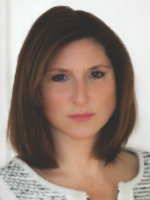
Studio 10 Founder and industry insider Grace Fodor tells SPC about the brand’s fresh approach to colour cosmetics for women in their late 30s and beyond.
We all know, as women in our late 30s and beyond, that it is easy to get stuck in a make-up rut. Using the same make-up in the same way as we did in our 20s won’t benefit us in our 40s – and there is also the fact it can even make us appear older. We almost need to go back to basics and take a fresh approach.
Studio 10 is an innovative range of age correcting and skin perfecting make-up essentials with instant results. I wanted to explore the ‘aesthetics’ of professional artistry and develop a range that would give women the ability ‘to look younger’ as part of their daily make-up routine. I felt strongly that this consumer group (which includes myself) had so far been drastically ignored and underserved by the existing market.
I read some interesting research that found women start to worry about ageing in their 20s. I think women are most worried about the visible signs of ageing – wrinkles, sagging skin and uneven skin tone through to age spots, redness broken capillaries and dark circles. Our starting point when we develop products is always these visible signs and we worked with a dermatologist to really understand this process.
But there is also the emotional aspect of getting older; how you think and feel about beauty as you age, and whether there is beauty in ageing. I really admire Jo Glanville-Blackburn, whose philosophy on beauty is not about being ‘young’. I think she sums it up brilliantly when she says beauty is ‘ageless’ and it is more about being ‘you’ – confident and self-assured. She also re-defined women in their 40s/50s as being in ‘middle youth’.
I couldn’t have put it better myself!
Studio 10 is an innovative range of age correcting, problem solving and skin perfecting ‘quick fix’ make-up products, designed to give women the ability to look younger as part of their daily routine.


A personal touch
Beauty brands expert Nikki Taylor, Founder of Taylor Made Beauty, says the gap between what brands are projecting and consumers are experiencing in stores needs to be bridged.
Having worked in beauty for over two decades, I feel that we are experiencing one of the single biggest shifts in approach that this industry has seen in that time. Beauty brands are waking up both to the presence of older women as a significant market segment and the spending power that comes with maturity.
We are seeing many more images of older women in major campaigns as the faces for both high street and high end brands. Two of the best to date to my mind are Dame Helen Mirren for L’Oréal and Charlotte Rampling for NARS. The images of these gloriously glamorous older women are being seen in print, online, across social media and on counters in stores. This change is very welcome. However, there is a gap between what the brands are projecting and what the consumer is actually experiencing in the store.
I believe that the responsibility for bridging this gap lies with both the retailer and the brand. The solution lies in recruitment and training. The industry should be encouraging more mature women and men into the workplace. Extended opening hours at retail means working hours can be flexible enough to fit around the varied needs of different employee age groups.
Sales consultant training must adapt to this new focus on the more mature consumer by brands. As a beauty industry insider and education specialist I know that training on product is often excellent. However, there is a gap when it comes to knowledge of the needs of the older customer and the level of service that they expect. One complaint I often hear from older customers is that the consultant did not show knowledge of their age-specific concerns. This consumer is heavily focused on service; if they receive appropriate service that answers their needs they are much more likely to return and buy again.
Nikki Taylor has more than 25 years experience working in the beauty industry and runs brand consultancy Taylor
Made Beauty.
www.taylor-made-beauty.com
Post-menopause skin care needs
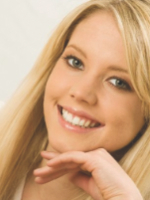
Aimee Blakemore, Brand Manager at Forme Laboratories, discusses developing a range of skin care products to meet the needs of post-menopausal skin.
Maintaining the perfect skin at any age is tough. First, there’s puberty, then pregnancy and then just when we think it’s all going to balance out, menopause arrives. The skin, however, reacts very differently throughout each hormonal phase, for example, skin is not as robust during menopause as it was before and it is often the case that you cannot use the same products to treat teenage spots as you can to treat adult acne.
The average age of menopause is 52, but it can occur much earlier or later, and sparks many unwanted changes to the skin such as itching and dryness. This is due to the skin’s inability to retain water and a reduction in the body’s own sources of collagen and hyaluronic acid. This can cause the skin to become thinner and deep wrinkles to form.
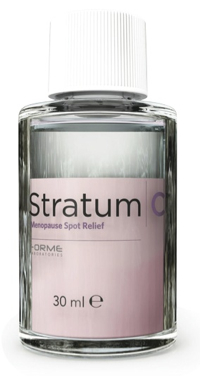
The heightened sensitivity of skin during this time means that the products we have been using for years may no longer be suitable for our skin. Skin may now demand less preservatives and may no longer be able to withstand the potent perfumes and alcohol-based formulations that we once used.
Stratum C Skin Care was formulated to include collagen boosting peptides to stimulate the body’s own natural collagen and hyaluron production within 28 days without the need for any invasive treatments. The products also use added hyaluronic acid to replenish that lost from skin and to increase collagen synthesis.
Stratum C, developed by Forme Laboratories, is a range of skin care products formulated specifically for menopausal and peri-menopausal skin.
